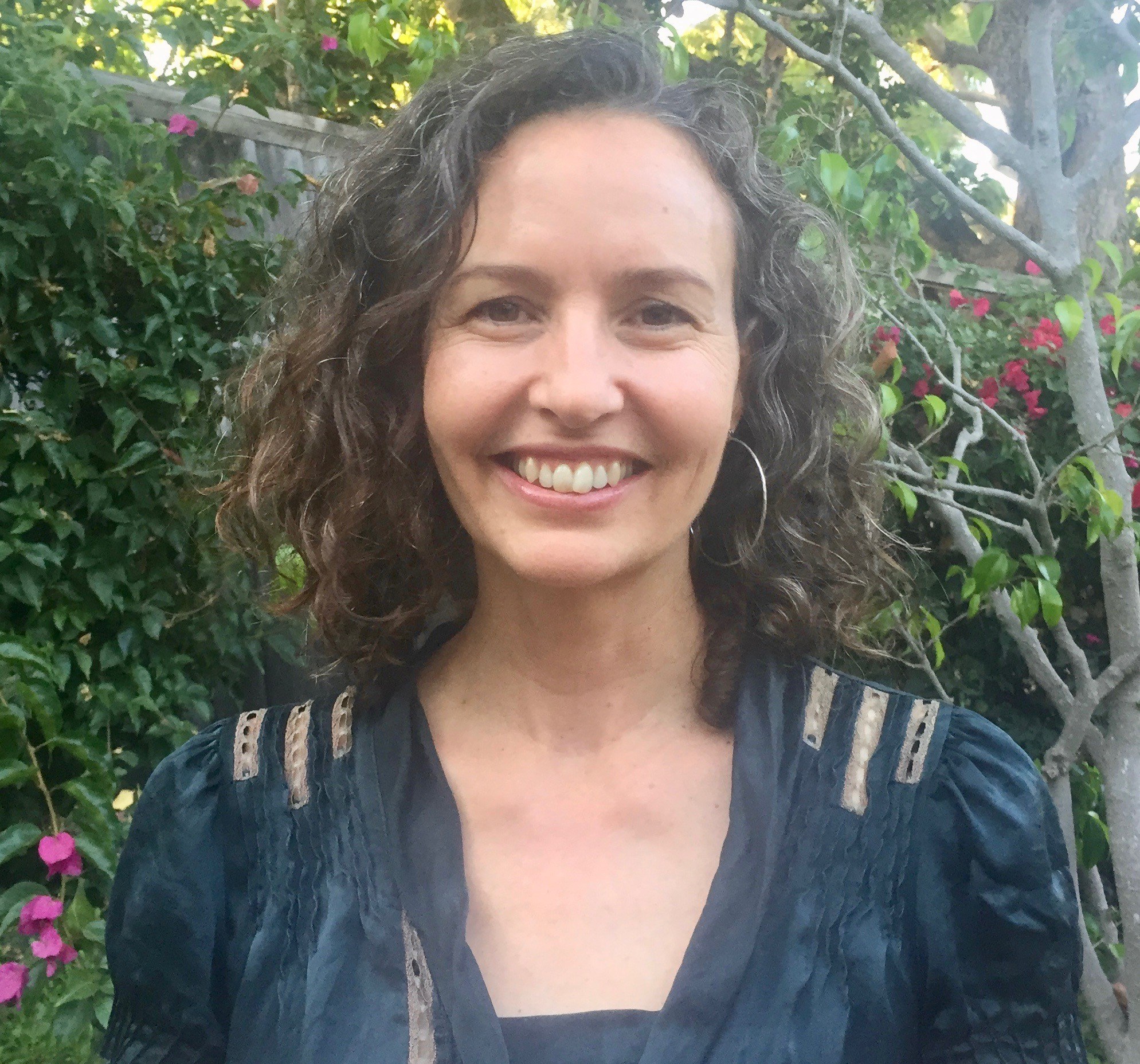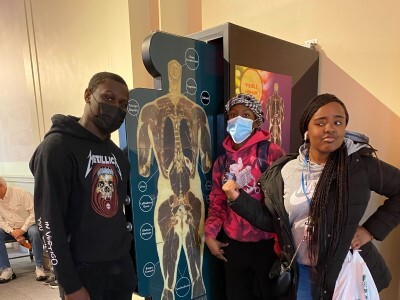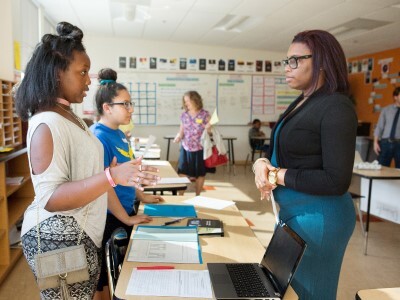Reimagining Assessment
9 Things You Can Do to Support Student Agency with Formative Assessment
Topics

Educators are rethinking the purposes, forms, and nature of assessment. Beyond testing mastery of traditional content knowledge—an essential task, but not nearly sufficient—educators are designing assessment for learning as an integral part of the learning process.
Teachers and students from Arizona describe the three stages they went through to build a classroom culture for formative assessment.
Sometimes when teachers see good formative-assessment lessons in action, they believe they represent unrealistic aspirations for their own classrooms. In these lessons, students may be developing significant insights about their own learning while assessing their work, giving each other useful feedback, and easily sharing their thinking with others while participating in rich discussions. Some teachers may be inclined to chuckle and say, "That could never work with my students!" And in part, that's true. That is ... if they don't know the path to get there.
Luckily, a group of teachers in Arizona have shed light on how to reach this vision, describing the three stages they saw their own students go through as they increased their agency by learning to use formative assessment themselves. Students were from a range of subject areas and grades, K-12.These teachers also described what they each did to support students along the way. Here's what they had to say.
Students at the Beginning
"We would repeat the learning target at the start of each lesson, but if you were to ask students later on, 'What are we learning?' They would say, 'I don't know.'"
As students begin learning formative assessment, old habits still inform their thinking. They often want constant reassurance that they are "doing it right," or conversely, are resistant to trying anything new for fear of looking "stupid" in front of their classmates. They tend to rely on their teacher exclusively to answer questions and give feedback during lessons.
Students also often fear judgment and are hesitant to show others their work. They may not be honest about their actual progress and express fear about hurting their peers' feelings when asked to give feedback. One teacher stated,
"When implementing peer feedback and self-assessment at the beginning of the year, my students really struggled with finding value in it. Their feedback was vague, and their self-reflection wasn't specific."
Overall, students at this stage are more motivated to complete their work to get good grades. To support students in the shift toward greater agency, teachers said they would:
- Model how to use elements of the formative-assessment process, including creating Learning Goals and Success Criteria, noticing learning while it's occurring, making sense of it, and providing feedback. Teachers found the practice of think alouds particularly useful.
- Scaffold the peer-feedback process with sentence stems and checklists. This helps students target their comments so that they are aligned with the intended learning and find the language they need to kindly make suggestions for improvement.
- Be transparent about their own learning journey with formative assessment. Teachers share what they are trying out and moments when they make mistakes in lessons, and they ask students for help to solve problems in lessons. This models a classroom culture where it's OK not to know everything and validates everyone as a learner.
Students at the Developing Stage
"Students would share their thoughts about what the Success Criteria means to them and change a word for better understanding."
When students reach the next stage in agency, they are likely to be able to internalize what the Learning Goals are for a lesson and offer ideas about what success looks like when meeting them. They can start to see how their own work fits into this criteria.
Students still struggle with applying feedback they receive but are more open to giving and receiving it. The idea that some feedback is "bad" still makes this a challenging process that continues to need a great deal of structure. But as the culture shifts, which it does in this stage, students realize that learning from one another is helpful, even sharing their uncertainty can enhance learning. One student stated,
"By acknowledging our flaws and strengths with each other, it allowed us to create bonds and trust."
Students can begin to participate in conversations about what went well in lessons and what can be improved, including what can be done differently during the next lesson. To support students at this level, teachers would:
- Focus modeling and think alouds on self-assessment and peer feedback. This can normalize what students may be thinking during these activities.
- Guide the class in developing a "growth mindset" to help students feel more comfortable being public about their learning journey and know that it is OK to have space for improvement.
- Review whole-class data with students from the days' lesson, e.g., create exit tickets using Google Forms to produce pie charts and bar graphs. This can create rich discussions about where the class really is, identifying gaps in understanding. Students can then participate in defining Learning Goals for the next lesson.
Students at the Advanced Level
"Students were able to give written feedback to other students that changed from, 'You got this wrong' to 'You got it right up until this step. What would be next?' and 'Do those numbers make sense? Why not?'"
Students at this stage have internalized a sense of agency and begun to use formative-assessment practices spontaneously to advance their own learning. They also apply these practices outside of the classroom to better navigate life outside of school. One student stated,
"I now know how to find certain things I will need to know in the future, as well as know what I need to work on in life."
Students are more willing to take risks and initiative in their learning, creating personalized Learning Goals and Success Criteria for themselves based on their self-assessment and peer feedback. They also feel comfortable taking on the role of leader, using their content knowledge to be a resource for their peers. They rely less on their teacher but frequently turn to their peers and other resources for help. Overall they feel less nervous about learning because they know what to do and understand where they are on their own learning path. To support students at this level, teachers would:
- Allow students to frequently construct learning experiences on their own. This process can often be "messy" and requires good communication structures between the teacher and students as well as a trusting classroom culture.
- Provide support for students to interpret and apply evidence of their own learning status. This is enabled by students' increase in metacognition, furthered by a teacher's transparency about their own self-assessment experiences.
- Provide feedback to students on the feedback they give to others, e.g., to support a move from solving problems for others to asking clarifying questions. This improves the capacity of each student to guide their own learning.
Importantly, what is the new role for teachers in this vision? Teachers stated that they now have more opportunities to further student learning by engaging in meaningful conversations, guiding learning through expert feedback, and asking deep questions. One teacher shared that,
"I am but one voice of many, and most of the students understand they're responsible, not just for themselves but for the community of learners. I am so motivated to build upon this realization that 8-year-old children can be true teachers and companions on a peer's path toward success."
This blog post is based on the gathered reflections of urban and rural public school teachers in Arizona at the end of a yearlong formative-assessment course. This work is part of a project called Formative Insights: Assessment for Learning and is supported by funding from the Assessment for Learning Project, a national initiative to rethink the role of assessment in learning.
Photo at top courtesy of Allison Shelley/The Verbatim Agency for American Education: Images of Teachers and Students in Action.




